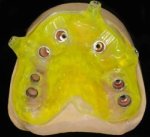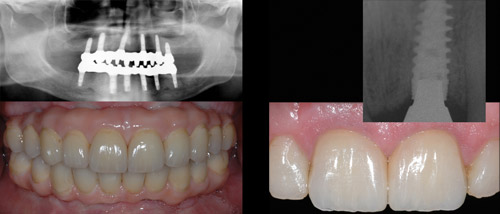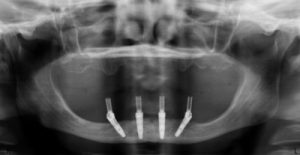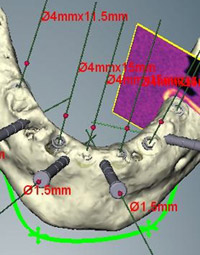Computer guided implantology
The flapless technique entails placing implants without raising a surgical flap. This procedure can be planned using various methods, the most innovative of which is at present a computerized processing of the patient’s CAT image.
The procedure is planned using a computer, by virtually placing implants in the patient’s bone; a customized surgical template then guides the dentist in correctly placing the implants in the patient’s mouth.
This procedure has the important advantage of being minimally invasive and is best indicated for fully edentulous patients who wear a removable denture. The post-op discomfort is basically nil and the time needed to perform the surgery is drastically reduced.
And yet, this technique can be used only in selected clinical cases, because closed surgery means that the various techniques for tissue augmentation are almost entirely hindered.

In the picture above you can see a surgical template. This tool allows the insertion of implants in the ideal position with a minimally invasive approach dramatically reducing surgical trauma and time.
Our partner: Nobel Biocare
Useful links and insights:
http://www.sicoi.it
http://www.osteointegrazione.it
http://www.sidp.it




